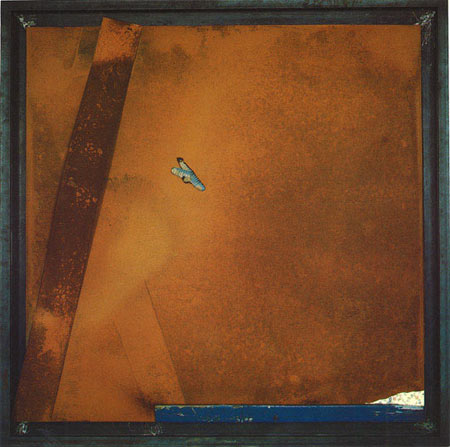
The loveliest things with which we keep company, art included, burn with the burden of the unspeakable. They remain smudged mysteries, objective correlatives, that affect our psyches so profoundly that we’re rendered stunned and happy mutes. How wonderful, then, that “Revelation: The Art of James Magee” encompasses an array of sculpture so profound it carries enough pent-up sonic jolt to create a new world, whole and entire.
For forty years Magee has worked quietly, attracting only the attention of a handful of scholars and devotees. His work is clearly an amalgam of the sacred and the profane — but rarely has an artist made it more apparent that both spheres share space and are inextricably woven. They don’t reside independently; rather, what one could call artistic “transubstantiation” is Magee’s perpetual work in progress. His career has spanned the gamut of cab driver, welder, legal advisor and inveterate survivor of the Hudson River Piers, a vast collection of abandoned warehouses that provided a place for men to explore their homosexual inclinations without the intrusion of daylight. These assorted vocations meld with a sensibility so delicate and profound that one feels they’re in the presence of what the Psalmists refer to as “the secret place of thunder.”
“Paradise Overcast” is a case in point. It’s a moody, weathered panel of rolled steel that’s scratched and over-worn. It’s a scarred island of redacted memory. The piece alone is an aching reminder of our lives and how they become etched with experience and memory. But, when taken into context with the accompanying poetry of the artist's “title,” one hears a chanting reminder that the gods reside in tangled bed sheets as readily as in tabernacles. It’s an unnerving mash-up of Sunday school and a foray into the gay underground of New York bars.
An “Untitled” work demands that we limn the meaning of painting versus sculpture. It’s housed in a heavy, shallow box that holds all manner of glorious planetary stuff — steel, bright-red shells and god-knows-what-else. It’s palpable magic that engages us with an aria-like immediacy. It’s layered and textured in a way that intimates both bodily corpuscles and our “other” (ethereal) selves. It’s cell-by-cell raw nerves; it’s deep as a ravine; it’s a prayer so fierce it makes me shut my eyes lest I be burned by its light. And, ultimately, I suspect it operates as a painting might, rather than as a sculpture. It’s a juxtaposition of color and form and it ignites with the same dreamy, medium-hot flame one might associate with Robert Rauschenberg.
Conversely, “Winter River” throws us through the (metaphorical) windshield. The simplicity of the work is stunning. One can’t help but be shocked by the magic that’s conjured by a simple trinity of mundane materials: lead, steel and glass. It becomes a trope for falling through ice, descent and even drowning. It’s a beautiful fissure turned scarily sublime, a reminder that a lovely, greenish split can become the cosmic divide through which one might literally slip. Moreover, this eerie sensation is confirmed by the accompanying intonation of Magee’s poetic rendition of his own private saga of ancestors, one of whom is named “Jacob” no less.
“For Miguel” is haunting and lovely, a tiny cathedral for the wounded and wounding. It’s a ravaged surface of metal shavings, paprika, grease and glue, glass and steel. It’s also accompanied by a poem that’s sexy and raw — not to mention spatial in the way that Wallace Stevens’ poetry constellates volume and plenitude. Together, the montage of sound and sight topple your sensibility into the artist’s world of a “rented room” and a simple “yellow vase” that, again, is reminiscent of Stevens’ “jar in Tennessee.”
This is art one is able to witness rarely in a lifetime. It’s a chance to enter a room where the proverbial white-hot light resides. However, if you’re expecting harps and clouds when you visit the Realm Sublime, you might discover that Paradise is firmly fixed in rusting metal, car parts and windshields. I found it all rather transcendent — then subsequently bumped my head on the bottom of the allegorical pool when I heard the poetry that accompanies each piece. It was quite a trajectory. But when I recovered from my own preconceptions of what Magee’s art should be, I found my sensibilities had been fully educated and made to plumb both the heights and the (equally vital) depths.
This isn’t just a good show. It’s majestic and difficult. “Revelation” is lovely and deeply so. In Texas vernacular, maybe the city finally really does own both “hat and cattle.”
